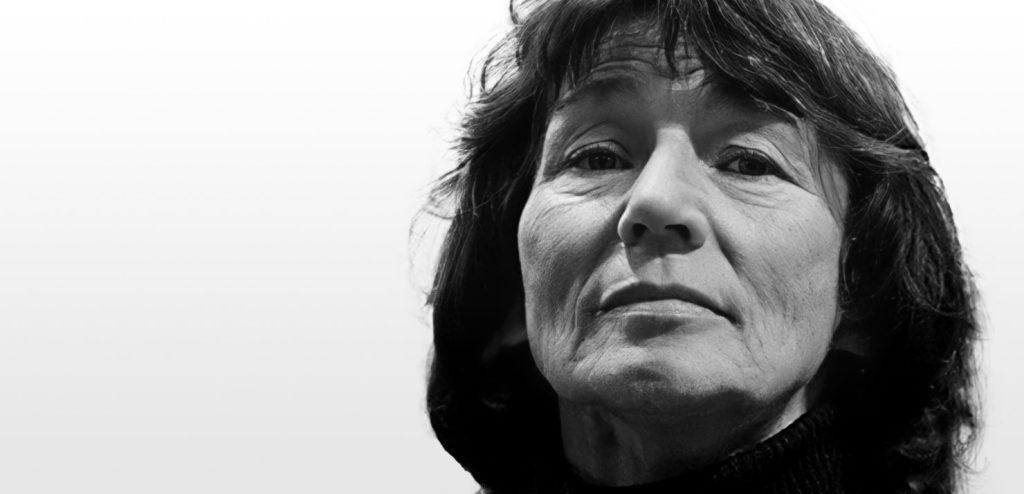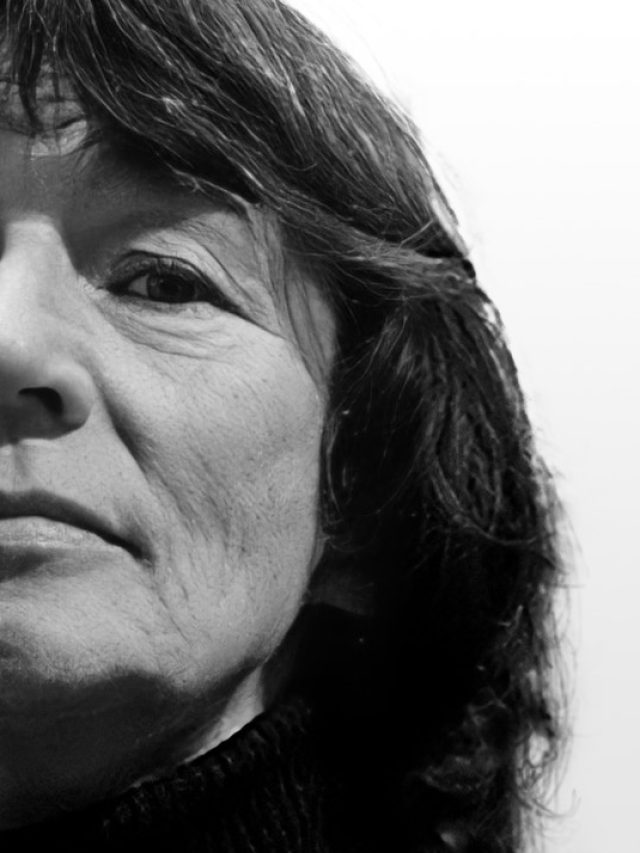Not everyone can harness the power of shapes and geometry the way Magdalena Abakanowicz has. A trailblazer in fibre-based sculpting, she was born in 1930 in a Polish aristocracy. Her teenage years were spent amidst the Nazi occupation. The horrors of the war scarred her, which can be felt in most of her installations. She is a significant part of the Constructivism movement. She has been commissioned for numerous public installations and featured in over 40 solo exhibitions. Magdalena Abakanowicz died on 2017.
Magdalena Abakanowicz Art Style
Abakanowicz is seldom considered the queen of fibres. Growing up, she played in the forests near her home. Since then, she has incorporated elements of naturally occurring fibres, rendering sustainability to her artworks. She has weaved flax, wool, sisal ropes, hemp, horsehair, tree bark, animal fur and other fibres into sculptures. Although most of her humanoid sculptures are depicted as headless, they seem to have an individuality. Her experiences in a war-torn Poland interject her artistic ventures. Her sculptures depict the conundrum of vulnerability and dignity. In addition to fibres, she dabbled in wood, bronze, stone, and clay.
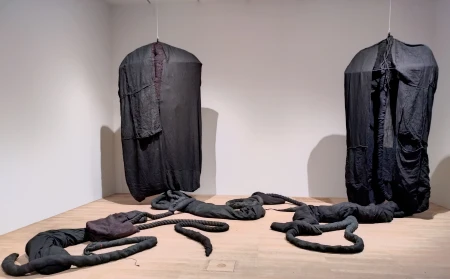
Magdalena Abakanowicz Artwork
An accomplished sculptor, Magdalena Abakanowicz artistry lies in rebellious defiance. She relies on anonymity to propagate both a united front and ignorance. Although each of her sculptures deserves an honourable mention, the following few are deemed as a pinnacle of her career.
Abakans
The Abakans served as both objects and spaces of their own. They were made of soft woven fibres. Although they never had a distinct shape, they were manoeuvred from the ceiling to form an organic and ambiguous structure. These installations were the first of their kind, hence she named them after herself. These abakans were a delicate mix of colours and textured materials. They might seem unfinished, courtesy of the occasional marred seams and conjunctive appendages, but they are a representation of a horrific history. Although they connote an eerie presence, they exhume warmth and life.
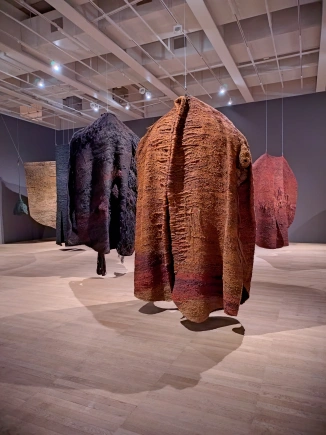
Crowds
To her own admission, Magdalena Abakanowicz is wary of the crowds. She developed a fearful disgust of crowded places during her formative years, which were spent running from place to place. Her installation, aptly titled ‘Crowds’ deals with the existential dread. It showcases a crowd of headless humanoid figures made entirely of burlap sacks, their coarseness signifying the vivid horrendous experiences. It is as if the skin is peeled back to reveal only the basic and essential. The audiences are urged to roam around these installations, thereby marking an indistinguishable mix of sentience and lifelessness.
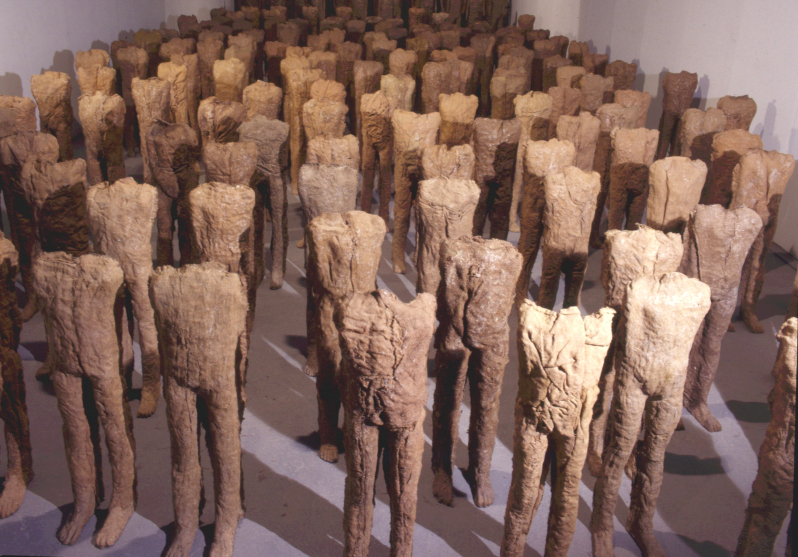
At times, they may be considered a connotation of democracy, a unanimous notion of a herd – ready to trample, and destroy but also create and protect. It is an exemplary personification of a synecdoche.
Agora
Agora refers to the gathering places in the ancient Greek civilizations. This public installation features 106 nine-foot-tall headless & armless statues at Chicago’s Grant Park. These sculptures are made of rusted iron, their skin resembling tree bark. Although all of them are humanoid, their intricate details ensure the character difference. ‘Agora’ has been mimicked over countries, but hers remains the largest to date.
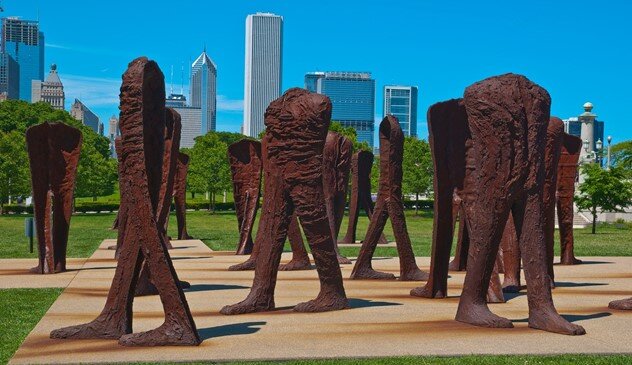
Photo Courtesy – World Cultural Council
Google Doodle Celebrates the 93rd Birthday of Polish Sculptor Magdalena Abakanowicz

